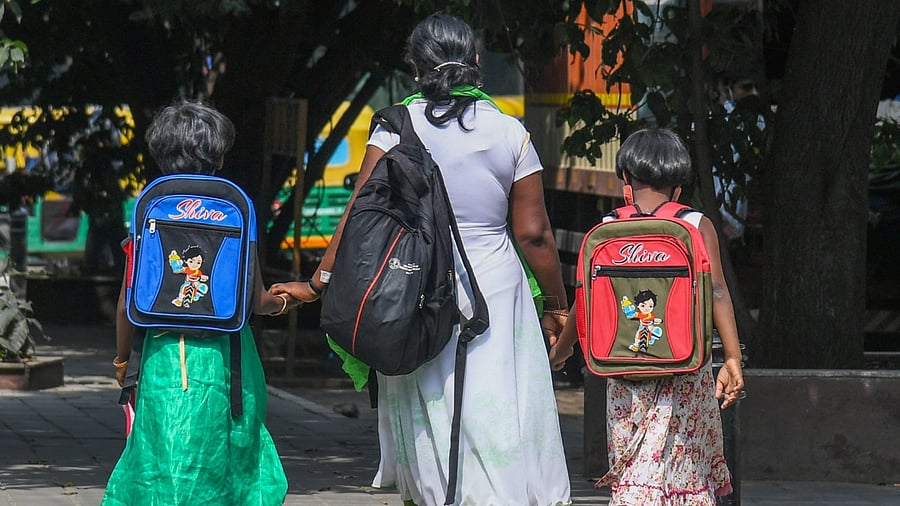
Representative image
Credit: DH Photo
Thanks to loving parents with private vehicles, children these days are whisked away to school in various modes of transport. Every morning, two-, three- and four-wheelers can be seen speeding past, ferrying their precious cargo to school on time.
In apartment complexes, a designated bus-boarding area resembles an airport departure lounge, complete with security staff scurrying about to help parents locate the correct bus for their child. As parents call out to their offspring, the children hop, skip and jump into their assigned bus from a nearby play area.
Meanwhile, parents have already stowed their bags on the seats and entrusted the attendant with the task of locating missing water bottles and pencil cases on the return journey.
Some parents can be seen sprinting impatiently behind the bus as it pulls away, while younger parents eagerly capture the moment for their family albums. The mixed emotions on parents’ faces are palpable, especially when a child announces that they have left their project work at home – and it’s the last day for submission.
For my children, however, the school run was a far more rustic affair. The tin rickshaw, with its curved metal roof, was their daily carrier. Every morning, hundreds of these rickshaws would line up along the roads in cities across North India. With children packed tightly onto small wooden bars on either side, about 12-15 youngsters would be neatly stowed away under one roof.
School bags adorned the sides of the rickshaw, resembling temple bells. As the vehicle navigated speed bumps, students would pile on top of each other, evoking scenes from American football. Clutching the small latch for safety, the child nearest the door would pray for a smooth ride. After cresting the bump, the students would tumble back into their original positions. The safest seats were reserved for the youngest ones, who enjoyed the maximum cushioning in the centre seats.
The bumpy rides tested the strength and flexibility of their spines, while the summer months brought soporific journeys that left them enervated by the heat. Winters, however, were a delight, with children walking alongside the rickshaw.
During monsoons, the tarpaulin-covered rickshaw resembled a slow-moving tent. Despite the protection, water would seep in, making the journey back home an adventurous one.
Children would arrive home soaking wet, with dripping bags and squeaky shoes. Their innocuous smiles and makeshift victory boats would tell tales of their sweet success. The games, smiles, fights and make-ups within the rickshaw were stories of their own battles. Though these journeys were often arduous, they remain etched in memory, bringing a smile to our faces whenever we look back.